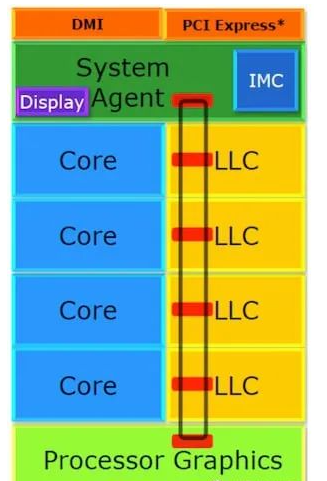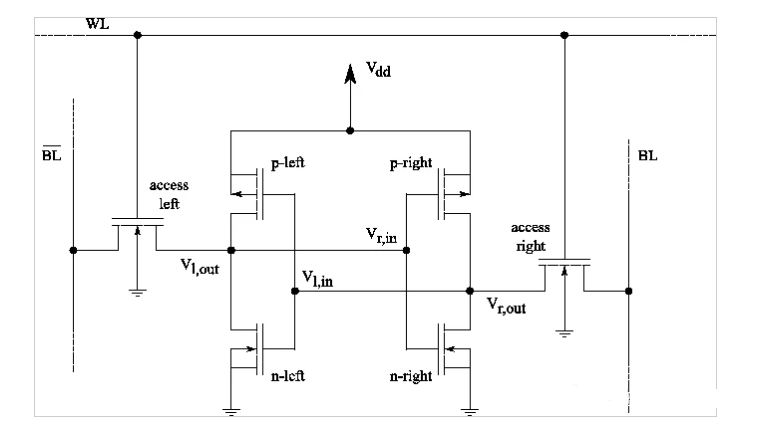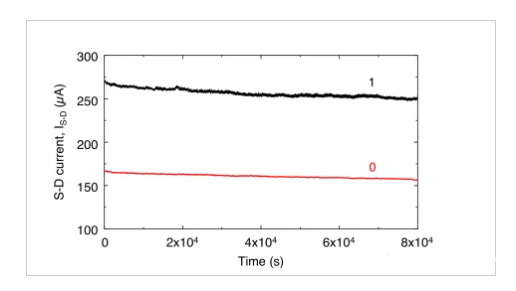At a high level, computer architecture has several key components: the CPU (consisting of computing cores and interconnects), memory (consisting of cache, main memory, and hard drives), and input and output hardware. While all parts of the architecture are important to overall efficiency, for modern workloads the main performance bottleneck is memory.
As a result, there has been some significant research in recent years trying to increase memory speed while maintaining as much power efficiency as possible.
In this article, we discuss three recent memory announcements from industry and academia to assess progress in the field. We’ll start with a brief review of memory technology to highlight the importance of new developments from SureCore, Lancaster University, Western Digital and Kioxia.
A Brief Introduction to Memory Technology
Memory can be roughly divided into two categories: non-volatile and volatile. Non-volatile memory can store its contents through millions of power cycles. The contents of memory remain until they are intentionally erased or overwritten. Two examples of non-volatile memory are flash memory and HDDs. In contrast, volatile memory loses its contents after a power cycle. Two common types of volatile memory are SRAM and DRAM.
While both SRAM and DRAM are volatile, DRAM is usually slower because of how it is implemented. In DRAM, each bit is stored using a capacitor. Since capacitors lose charge unless a potential difference is continuously applied across the board, DRAM needs to be refreshed periodically to prevent data loss. This periodic flushing causes high latency and thus slower memory.
SRAM, on the other hand, does not use capacitors to store data. Instead, it uses multiple transistors (called SRAM cells) to store bits. SRAM can be written and read using a grid of bit lines and word lines.
One SRAM cell can contain six MOSFETs. Bit lines and world lines are used to write values into cells
For embedded and mobile computing applications such as smartphones, designers use SRAM, which is as power efficient as possible to extend the device’s battery life. Power dissipation can be active or passive due to leakage currents. In SRAM, parasitic capacitance causes charge to move in and out of the memory circuit, causing real power to dissipate.
SureCore Brings Energy-Saving Technology to SRAM
A British company called SureCore, which specializes in ultra-low-power embedded IP, has developed a patented technology called the Cascode Precharge Sense Amplifier (CPSA). The company claims this technology can significantly reduce active and passive power consumption on SRAM.
The CPSA works by controlling the bit line voltage swing on the SRAM, which can vary significantly due to the manufacturing process, thereby reducing power consumption. While individual bitline voltage swings are typically small on SRAMs, because there are so many bitlines, the total bitline swing actually accounts for the majority of the effective power dissipation on an SRAM.
Lancaster researchers create ‘ULTRARAM’
Recent research on improving memory has also focused on non-volatile storage. Researchers at Lancaster University have announced the formation of a spin-off company to create ULTRARAM, a memory technology that combines the non-volatility of flash memory with the performance and power advantages of DRAM.
ULTRARAM exploits quantum resonant tunneling in the semiconductor materials that make up RAM. The semiconductor compounds used in ULTRARAM are in the 6.1 Angstrom family, such as GaSb, InAs, and AlSb, which are particularly suitable for high-speed designs. While the physics behind quantum resonant tunneling is complex, it basically allows researchers to create a type of nonvolatile memory that doesn’t consume as much power and offers faster speeds than DRAM.
In ULTRARAM, each logic state is stored in a floating gate. Due to the properties of 6.1A semiconductors, the floating gate can switch from a high resistance state to a high conduction state at low voltage. These properties make it fast, energy-efficient, and non-volatile.
Kioxia and Western Digital team up to develop 3D Flash
Cell density is another very important characteristic of non-volatile memory as it allows more cells to fit into the same area and increase storage capacity. In March, Western Digital and Kioxia announced details of a new 3D flash memory technology. In this technology, each cell wafer is fabricated individually and then bonded together to maximize bit density. Memory is scaled both vertically and horizontally to increase bit density, which increases flash capacity.
Innovating the Modern Computer Begins with Memory
Modern computers are complex machines. Modern designs are large and complex with multiple cores, multiple levels of cache, main memory, and complex multithreading and prediction mechanisms. For decades, however, the basic goal of modern computer architects has remained largely the same: to create a machine with sufficient computing power, while still being energy-efficient and affordable. These researchers and companies hope to achieve this balance by innovating different memory technologies—whether ultra-low-power SRAM, ULTRARAM or 3D flash memory.
Post time: Apr-27-2023



